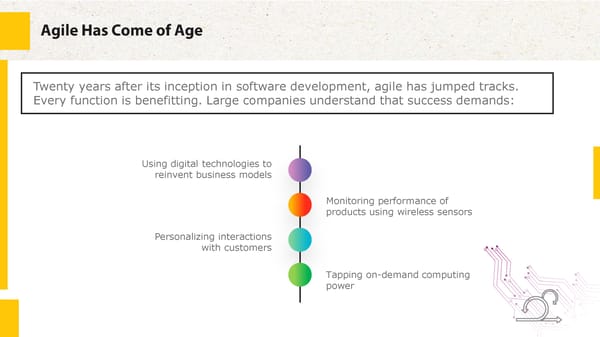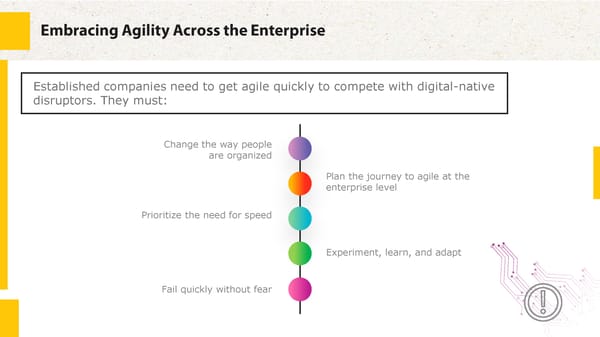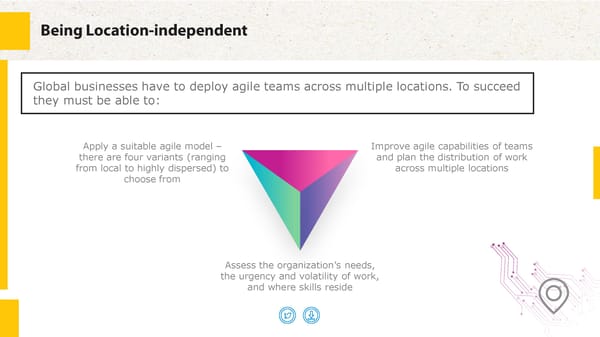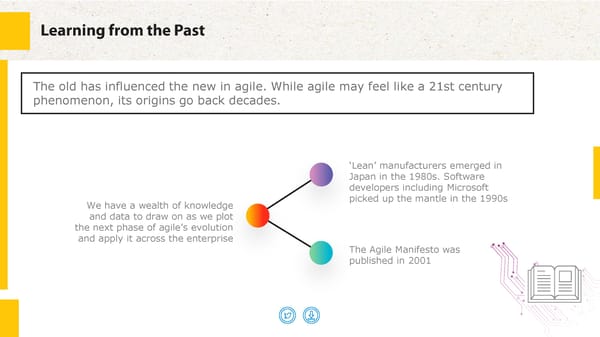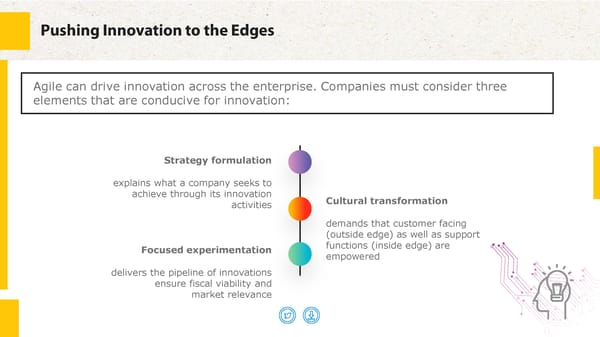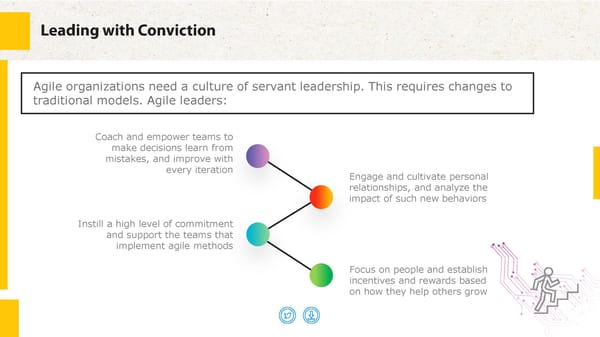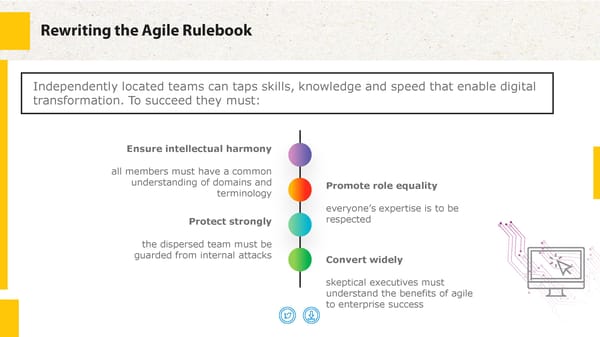Agile for Business
Presentation | Agile’s Day Has Truly Arrived
Agile’s Day Has Truly Arrived
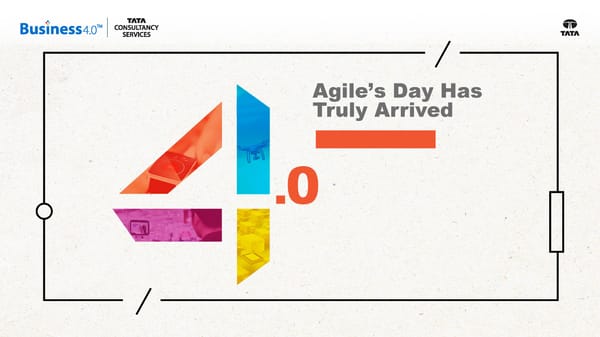

This is a modal window.
Agile Has Come of Age Twenty years after its inception in software development, agile has jumped tracks. Every function is benefitting. Large companies understand that success demands: Using digital technologies to reinvent business models Monitoring performance of products using wireless sensors Personalizing interactions with customers Tapping on-demand computing power
Embracing Agility Across the Enterprise Established companies need to get agile quickly to compete with digital-native disruptors. They must: Change the way people are organized Plan the journey to agile at the enterprise level Prioritize the need for speed Experiment, learn, and adapt Fail quickly without fear
Being Location-independent Global businesses have to deploy agile teams across multiple locations. To succeed they must be able to: Apply a suitable agile model – Improve agile capabilities of teams there are four variants (ranging and plan the distribution of work from local to highly dispersed) to across multiple locations choose from Assess the organization’s needs, the urgency and volatility of work, and where skills reside
Learning from the Past The old has influenced the new in agile. While agile may feel like a 21st century phenomenon, its origins go back decades. ‘Lean’ manufacturers emerged in Japan in the 1980s. Software developers including Microsoft We have a wealth of knowledge picked up the mantle in the 1990s and data to draw on as we plot the next phase of agile’s evolution and apply it across the enterprise The Agile Manifesto was published in 2001
Pushing Innovation to the Edges Agile can drive innovation across the enterprise. Companies must consider three elements that are conducive for innovation: Strategy formulation explains what a company seeks to achieve through its innovation Cultural transformation activities demands that customer facing (outside edge) as well as support Focused experimentation functions (inside edge) are empowered delivers the pipeline of innovations ensure fiscal viability and market relevance
Leading with Conviction Agile organizations need a culture of servant leadership. This requires changes to traditional models. Agile leaders: Coach and empower teams to make decisions learn from mistakes, and improve with every iteration Engage and cultivate personal relationships, and analyze the impact of such new behaviors Instill a high level of commitment and support the teams that implement agile methods Focus on people and establish incentives and rewards based on how they help others grow
Teaching Agile to Big Organizations Large organizations have to re-engineer themselves to acquire lean startup capabilities. They have to: Let go of their fear of failure Search for new business models Think like innovators rather then execute existing ones not administrators
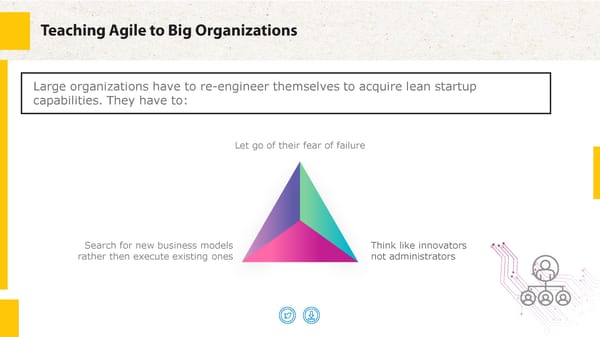
Rewriting the Agile Rulebook Independently located teams can taps skills, knowledge and speed that enable digital transformation. To succeed they must: Ensure intellectual harmony all members must have a common understanding of domains and Promote role equality terminology everyone’s expertise is to be Protect strongly respected the dispersed team must be guarded from internal attacks Convert widely skeptical executives must understand the benefits of agile to enterprise success
Thank You Read more Download 10 Contact Us

